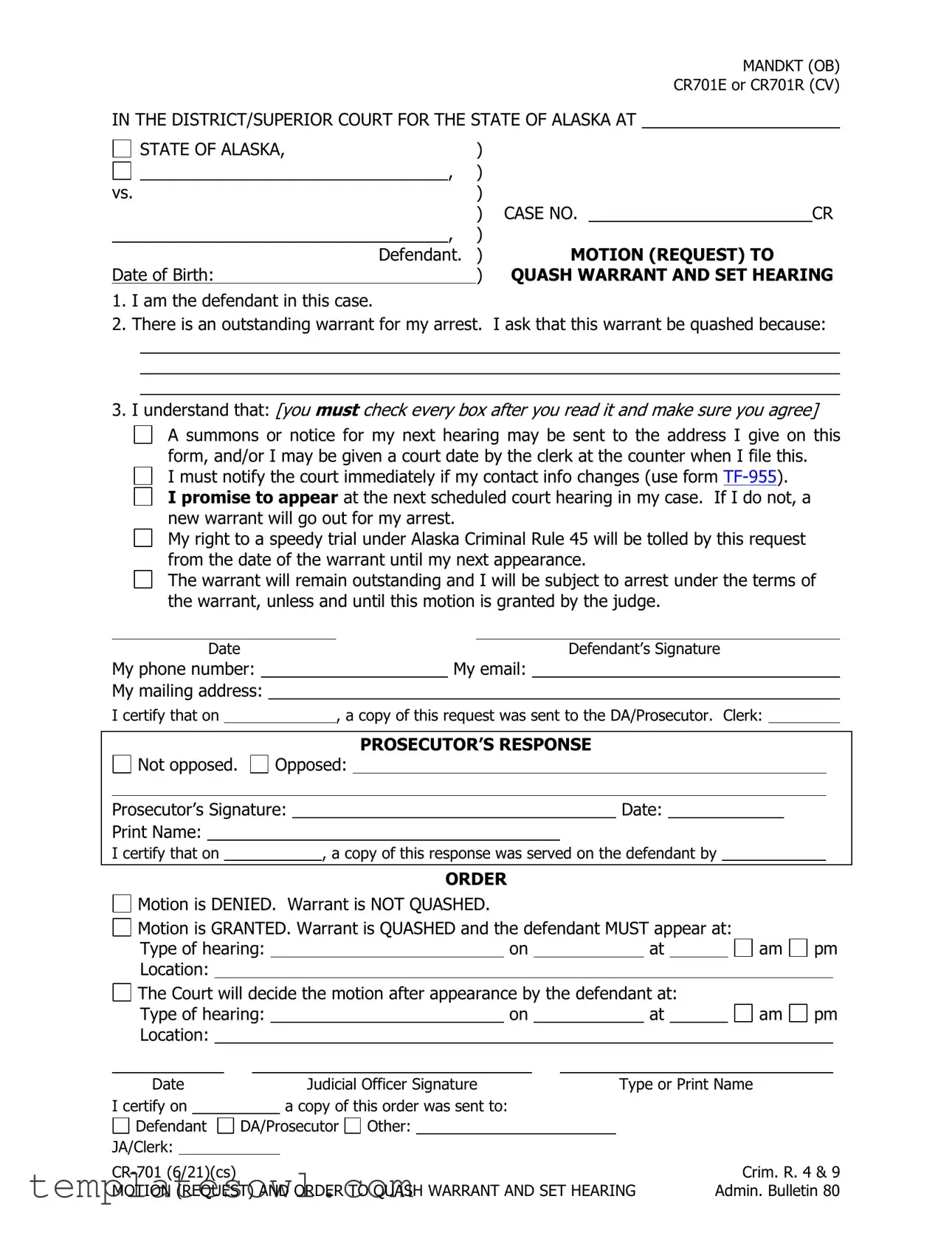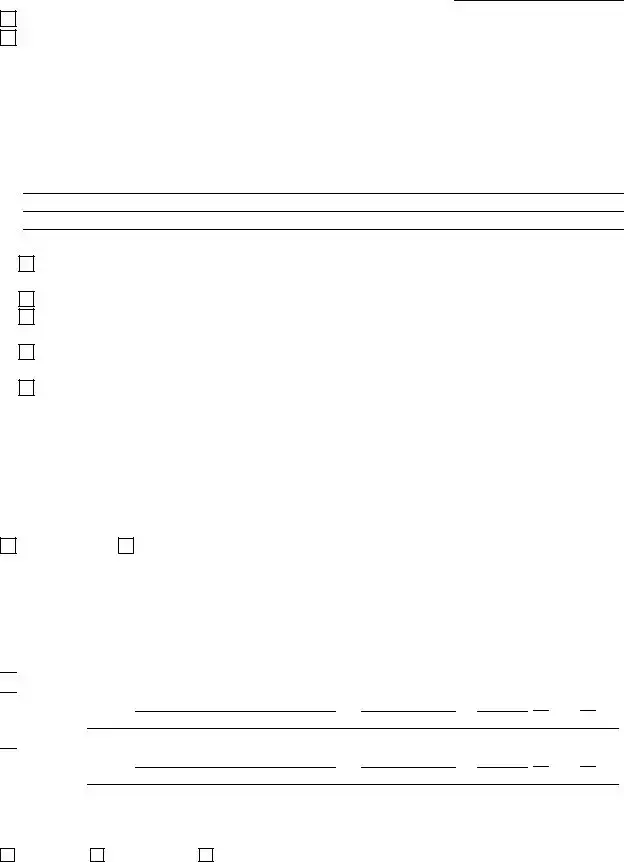Filling out the Quash Warrant Request form is an essential step for individuals facing an outstanding warrant. Unfortunately, many people make mistakes that can jeopardize their requests. Below are ten common mistakes to avoid when completing this form.
First, failing to provide accurate personal information can create significant trouble. Ensure that your name, date of birth, and any other identifiers are correct and match official documents. Errors in these details may lead to delays or outright denial of the request.
Second, leaving the box unchecked in the understanding section is a frequent error. Each statement must be read thoroughly and checked to confirm agreement. Omitting this can suggest to the court that you do not fully comprehend the consequences of your request.
Third, some individuals neglect to provide updated contact information. It is vital to include a current phone number and email address. If the court cannot reach you due to outdated or incorrect contact details, the hearing could be missed, potentially resulting in further legal issues.
Moreover, people often overlook the importance of notifying the court about any changes in contact information. You must understand that this can lead to missed court dates and the reissuing of warrants if the court cannot find you.
Another common mistake is not securing a copy of the request that you file. Ensure to keep a filled copy for your records. This documentation will be crucial if any discrepancies arise later.
Many individuals also forget to check the response section for the prosecutor's input. Be aware that the prosecutor may oppose your motion. You should be prepared to handle this situation and understand its implications for your case.
Additionally, submitting the request form on time is key. Some individuals wait too long to file, not realizing that delays can affect the outcome of the motion. Be proactive to avoid unnecessary complications.
Another frequently overlooked detail is the signature. Not signing the form or providing an incomplete signature can render the request invalid. Ensure that your signature is clear and matches your name as listed in the case.
Lastly, failing to certify that you have sent a copy of the request to the DA or Prosecutor is a grave oversight. This certification is essential for the court to recognize that both parties are aware of the motion being made.
By avoiding these mistakes, individuals can increase their chances of having their warrants quashed. Attention to detail and thoroughness will go a long way in navigating this legal process successfully.



 Motion is DENIED. Warrant is NOT QUASHED.
Motion is DENIED. Warrant is NOT QUASHED.
 Motion is GRANTED. Warrant is QUASHED and the defendant MUST appear at:
Motion is GRANTED. Warrant is QUASHED and the defendant MUST appear at: am
am  pm Location:
pm Location:
 The Court will decide the motion after appearance by the defendant at:
The Court will decide the motion after appearance by the defendant at: am
am  pm Location:
pm Location: